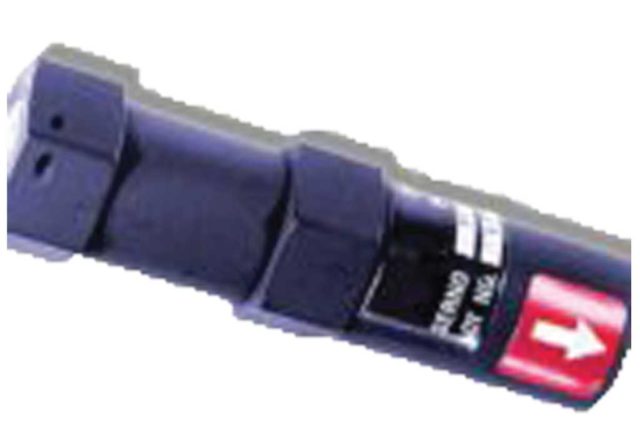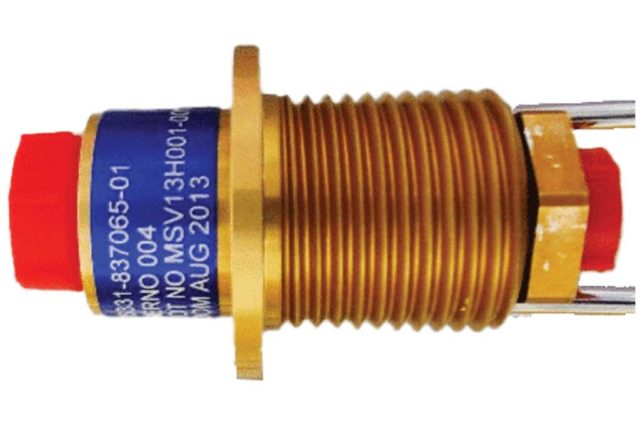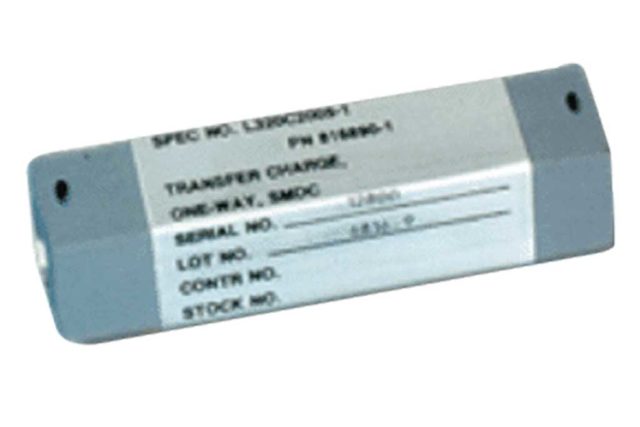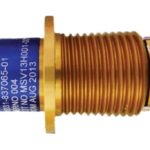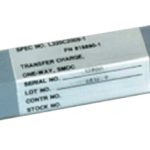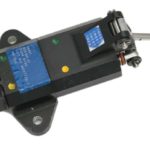One Way Initiators
Product Description
One Way Initiators are Explosive Transfer Line (ETL) high energy end tip actuated devices that allows detonation transfer to proceed to another high energy transfer line in one direction only. The location of the one way allows detonation to proceed in one direction only. This component is analogous to a one way diode in an electrical circuit. The advantage provided is to control multiple canopy/hatch removal vs. an individual one.
Key Features
- Allows system events in one direction but prevents them in another.
- Inert & Explosive Loaded Versions
- Initiation normally by attached High Energy (HE) ETL
How One Way Initiators Work
One Way Initiators weigh an average of 0.12 pounds with a length of 2.25-3.00 inches and diameter or hex of 0.75-inch. The JAS-39 One Way Initiator was qualified by similarity, reference document QTP816422. The B-1B and F-15 version was qualified to L320C2005. PacSci EMC’s One-Way Initiator designs are shown in the photos below.
An example of how One-Way Initiators can assist in sequencing the system follows (see Figure 32). Assume an aircraft with a forward and aft canopy, a system with canopy jettison system containing an internal Arm Fire Initiator (AFIs) in each cockpit and two external AFIs. The design is to allow functioning of either external AFI jettisons both canopies but the internal AFI in one cockpit can only jettison the canopy for that cockpit. The addition of One-Way Initiators allows this type of functionality within a system.
The operation of the unit is based on the high energy output (detonating) from the input ETL activating a firing pin that initiates a percussion primer. The primer then fires a transfer charge with a detonation output sufficient to fire the attached ETL on the other end. Since the firing pin and primer can only function in one direction, the one-way operating device is achieved by orientation of the internal components. The same is true for an inert one-way initiator except the percussion primer integrated into the end fitting an attached RDCTL. PacSci EMC’s inert design is similar to explosive loaded version except there is no transfer charge as the units above. Also the firing pin’s outer diameter is more than the inside diameter of the HE adapter. Additionally, the percussion primer does not emit enough force to drive the firing pin into the HE end fitting of an attached ETL HE end fitting.
Specifications
- Operating Temperature
–65°F to +350°F - Leak Rate
1×10-5 cc / sec./helium/second - Auto Detonation
Withstands +600°F minimum of 1 hour without detonating - Vibration
20-2,000 Hz random vibrations at a loading of 1 G2/Hz - Shock
18 each 11 milliseconds at shocks of 15 g’s and 12 each 11 milliseconds at shocks of 40 g’s - Drop
6 feet onto a steel plate at least 2 inches thick, over concrete per MIL-D-21625; 40 feet onto a steel plate over reinforced concrete per MIL-D-21625 - Temperature Cycling
-65°F for 55 minutes, +265°F for 45 minutes and +425°F for 5+ minutes - Sand/Dust
Withstands dust particles 0.1 to 1,000 microns diameter - Salt Fog Spray
48 hours at +95°F +/- 2.5°F per MIL-STD-810,Method 509 - Platform Use & Heritage
F-15, F/A-18, B-1B, Scorpion, Improved CFS w/Inert
